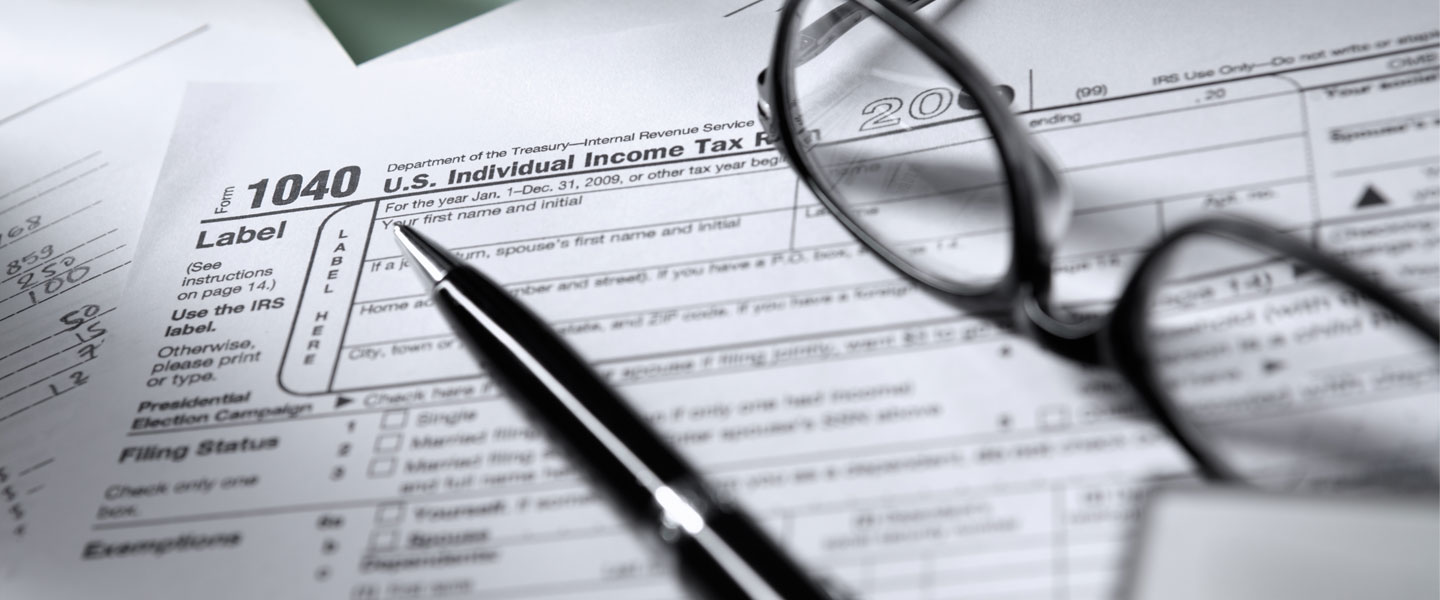Time running out to claim $1.5 billion in refunds for tax year 2019, taxpayers face July 17 deadline
WASHINGTON ― The Internal Revenue Service announced today that nearly 1.5 million people across the nation have unclaimed refunds for tax year 2019 but face a July 17 deadline to submit their tax return.
The IRS estimates almost $1.5 billion in refunds remain unclaimed because people haven’t filed their 2019 tax returns yet. The average median refund is $893 for this year, and the IRS has done a special state-by-state calculation to show how many people are potentially eligible for these refunds.
“The 2019 tax returns came due during the pandemic, and many people may have overlooked or forgotten about these refunds,” said IRS Commissioner Danny Werfel. “We want taxpayers to claim these refunds, but time is running out. People face a July 17 deadline to file their returns. We recommend taxpayers start soon to make sure they don’t miss out.”
Under the law, taxpayers usually have three years to file and claim their tax refunds. If they don’t file within three years, the money becomes the property of the U.S. Treasury.
But for 2019 tax returns, people have more time than usual to file to claim their refunds. Usually, the normal filing deadline to claim old refunds falls around the April tax deadline, which is April 18 this year for 2022 tax returns. But the three-year window for 2019 unfiled returns was postponed to July 17, 2023, due to the COVID-19 pandemic emergency. The IRS issued Notice 2023-21 on Feb. 27, 2023, providing legal guidance on claims made by the postponed deadline.
The IRS estimates the midpoint for the potential unclaimed refunds for 2019 to be $893. That means half of the refunds are more than $893 and half are less.
“With the pandemic taking place when the 2019 tax returns were originally due, people faced extremely unusual situations. People may have simply forgotten about tax refunds with the deadline that year postponed all the way into July,” Werfel said. “We frequently see students, part-time workers and others with little income overlook filing a tax return and never realize they may be owed a refund. We encourage people to review their records and start gathering records now, so they don’t run the risk of missing the July deadline.”
By missing out on filing a tax return, people stand to lose more than just their refund of taxes withheld or paid during 2019. Many low- and moderate-income workers may be eligible for the Earned Income Tax Credit (EITC). For 2019, the credit was worth as much as $6,557. The EITC helps individuals and families whose incomes are below certain thresholds in 2019. Those who are potentially eligible for EITC in 2019 had incomes below:
- $50,162 ($55,952 if married filing jointly) for those with three or more qualifying children;
- $46,703 ($52,493 if married filing jointly) for people with two qualifying children;
- $41,094 ($46,884 if married filing jointly) for those with one qualifying child, and;
- $15,570 ($21,370 if married filing jointly) for people without qualifying children.
The IRS reminds taxpayers seeking a 2019 tax refund that their checks may be held if they have not filed tax returns for 2020 and 2021. In addition, the refund will be applied to any amounts still owed to the IRS or a state tax agency and may be used to offset unpaid child support or past due federal debts, such as student loans.
Current and prior year tax forms (such as the tax year 2019 Forms 1040 and 1040-SR) and instructions are available on the IRS.gov Forms and Publications page or by calling toll-free 800-TAX-FORM (800-829-3676).
Need to file a 2019 tax return? Several options to get key documents
Although it’s been several years since 2019, the IRS reminds taxpayers there are ways they can still gather the information they need to file this tax return. But people should start early to make sure they have enough time to file before the July deadline for 2019 refunds. Here are some options:
- Request copies of key documents: Taxpayers who are missing Forms W-2, 1098, 1099 or 5498 for the years 2019, 2020 or 2021 can request copies from their employer, bank or other payers.
- Use Get Transcript Online at IRS.gov. Taxpayers who are unable to get those missing forms from their employer or other payers can order a free wage and income transcript at IRS.gov using the Get Transcript Online tool. For many taxpayers, this is by far the quickest and easiest option.
- Or request a transcript. Another option is for people to file Form 4506-T with the IRS to request a “wage and income transcript.” A wage and income transcript shows data from information returns received by the IRS, such as Forms W-2, 1099, 1098, Form 5498 and IRA contribution information. Taxpayers can use the information from the transcript to file their tax return. But plan ahead – these written requests can take several weeks; people are strongly urged to try the other options first.
Based on tax information currently available, the IRS estimated how many people in each state may be entitled to a tax refund. The actual refund amount will vary based on a household’s tax situation.
State-by-state estimates of individuals who may be due 2019 income tax refunds
| State or District | Estimated
Number of Individuals |
Median
Potential Refund |
Total
Potential Refunds* |
| Alabama | 23,900 | $880 | $23,694,700 |
| Alaska | 6,000 | $917 | $6,542,300 |
| Arizona | 35,400 | $824 | $33,911,500 |
| Arkansas | 12,800 | $864 | $12,586,100 |
| California | 144,700 | $856 | $141,780,000 |
| Colorado | 30,100 | $859 | $29,514,000 |
| Connecticut | 15,400 | $934 | $16,198,400 |
| Delaware | 5,700 | $880 | $5,754,900 |
| District of Columbia | 4,400 | $887 | $4,550,100 |
| Florida | 89,300 | $893 | $89,530,400 |
| Georgia | 48,000 | $826 | $46,269,000 |
| Hawaii | 8,800 | $932 | $9,197,700 |
| Idaho | 7,600 | $758 | $6,996,000 |
| Illinois | 55,800 | $916 | $57,591,300 |
| Indiana | 31,700 | $916 | $32,115,100 |
| Iowa | 15,300 | $926 | $15,492,600 |
| Kansas | 14,600 | $913 | $14,753,700 |
| Kentucky | 18,600 | $906 | $18,574,200 |
| Louisiana | 22,000 | $877 | $22,274,800 |
| Maine | 6,400 | $876 | $6,197,300 |
| Maryland | 31,400 | $897 | $32,344,500 |
| Massachusetts | 35,700 | $966 | $38,400,900 |
| Michigan | 48,500 | $888 | $48,582,600 |
| Minnesota | 23,200 | $848 | $22,387,800 |
| Mississippi | 12,300 | $820 | $11,836,700 |
| Missouri | 31,800 | $880 | $31,345,700 |
| Montana | 5,200 | $854 | $5,144,900 |
| Nebraska | 7,800 | $893 | $7,745,600 |
| Nevada | 15,800 | $869 | $15,550,300 |
| New Hampshire | 6,900 | $974 | $7,451,800 |
| New Jersey | 40,500 | $924 | $42,035,900 |
| New Mexico | 9,600 | $867 | $9,522,400 |
| New York | 81,600 | $945 | $86,826,200 |
| North Carolina | 45,800 | $862 | $44,426,600 |
| North Dakota | 3,700 | $958 | $3,997,100 |
| Ohio | 51,800 | $868 | $50,234,900 |
| Oklahoma | 21,400 | $897 | $21,770,000 |
| Oregon | 23,700 | $801 | $22,348,900 |
| Pennsylvania | 56,000 | $924 | $57,572,600 |
| Rhode Island | 4,300 | $924 | $4,468,700 |
| South Carolina | 18,200 | $809 | $17,264,100 |
| South Dakota | 3,700 | $918 | $3,746,700 |
| Tennessee | 28,100 | $873 | $27,623,700 |
| Texas | 135,300 | $924 | $142,235,200 |
| Utah | 11,700 | $845 | $11,198,400 |
| Vermont | 3,100 | $901 | $3,036,600 |
| Virginia | 42,200 | $869 | $42,110,500 |
| Washington | 42,400 | $934 | $44,823,200 |
| West Virginia | 6,500 | $959 | $6,818,900 |
| Wisconsin | 21,000 | $834 | $20,003,100 |
| Wyoming | 3,300 | $949 | $3,534,800 |
| Totals | 1,469,000 | $893 | $1,479,913,400 |
* Excluding credits.





